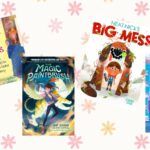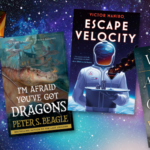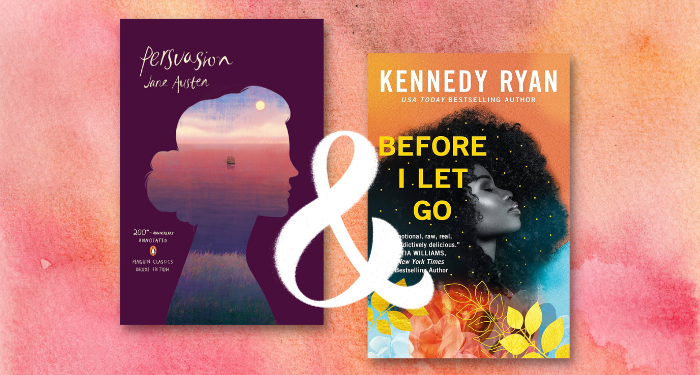
Books That Should Be Friends: 5 Book Pairs You Should Read at the Same Time
There are times when I am reading a book, and I think, “Oh, you should be friends with this book over here!” I then end up reading multiple books at the same time, and I’m not always sure if this is a good or bad thing. It’s not because I’m bored with the first book or looking for a distraction. Most of the time, it is because the two books share some commonality to enrich the story of the other. Some people call it parallel reading, multi-tasking reading, or simultaneous reading. And to be fair, students do this all the time (as do many researchers). It’s a bit like having all of those tabs open on your browser — yeah, you know exactly what I’m talking about.
There is a difference between “books that should be friends,” “books inspired by,” and even “adaptations of this other book.” It’s easy to find books inspired by or adapted from other books because they often echo the same story, just with a modern or alternate twist. “Books that should be friends” is a different concept. For me, they are books that might share a common element, but the books have run off in completely different directions. They don’t have to be the same genre or style. It’s like introducing two people at a party; if you think your books could enjoy each other’s company for longer than 10 minutes, then it’s a success!
To get you started, here are my top five pairings of books that should be friends. Give them a try and see how it changes your reading life.
To Kill A Mockingbird by Harper Lee & Dear Justyce by Nic Stone
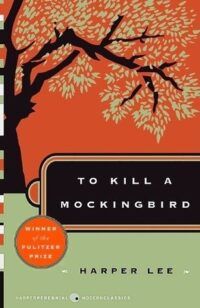
To Kill A Mockingbird by Harper Lee
In 2022, a school in Missouri banned Dear Martin by Nic Stone and offered students to read To Kill a Mockingbird instead. At face value, it kind of makes sense. Both Dear Martin and its quasi-sequel, Dear Justyce, are books that feel related to To Kill a Mockingbird. But the biggest difference is who tells the story. When you read To Kill a Mockingbird, you see the world through Scout’s eyes, filled with innocence, wonder, and curiosity. She is a white girl and quite sheltered, to an extent. Scout still sees heroes and still believes in heroes, thanks to her father being a hero.
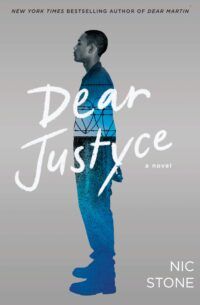
Dear Justyce by Nic Stone
On the other hand, Justice in Dear Martin and Quan in Dear Justyce are Black boys who are living in a society that already sees them as different. Dear Justyce is my preferred book to read with To Kill a Mockingbird because the contrast between these two books is a big part of the storytelling. Quan has never seen a hero. He never had the opportunity to know what one looks like. He is left with a story peppered with moments where he has to choose between two equally bad options. When he finally has someone fighting for him, it is so surreal as to create doubt in both Quan and the people around him. Reading these two books together is like reading the same story but on different sides of a 100-year-old mirror. One should not replace the other. They should be read together for a true and fair analysis of racism in our society.
Little Women by Louisa May Alcott & Lumberjanes by N.D. Stevenson, Grace Ellis, Shannon Watters, Brooklyn Allen, Maarta Laiho, and Aubrey Aiese
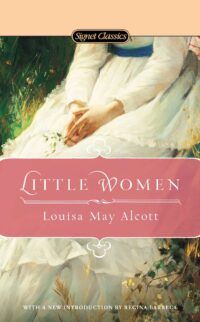
Little Women by Louisa May Alcott
Okay, it’s kind of obvious when the two main characters have the same name (and yes, Jo in Lumberjanes is named after Jo in Little Women). But it’s more than that. Little Women is set during the American Civil War. Life is not great, but it is always presented in a positive light because the family has each other. Meg, Jo, Beth, and Amy are all distinct individuals and yet somehow come together to depict what was then the “All-American Girl.” Fast forward 150 years, and the archetype has shifted a little.
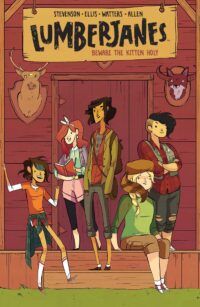
Lumberjanes by N.D. Stevenson, Grace Ellis, Shannon Watters, Brooklyn Allen, Maarta Laiho, and Aubrey Aiese
Lumberjanes has five (5) main characters: Jo, April, Molly, Mal, and Ripley. Again, each of them brings their own personal quirks to the mix, but together, they share enough commonality with the general public we can all feel some affiliation with them. As the Lumberjane Scouts chase down the mysteries surrounding their camp, I can’t help comparing it with the March girls taking on the social challenges of the mid-1860s. As each character comes of age and looks to their place in the group, we can see strong bonds of support across both books.
Dune by Frank Herbert & The Fifth Season by N.K. Jemisin

Dune by Frank Herbert
Confession: This is the pairing I am most hesitant to suggest to you. Heavy-hitting fantasy books with major world-building concepts are possibly The Worst Books to Read at the Same Time because they demand so much of you when reading them. Both Dune and The Fifth Season are famous for this exact reason. It’s not just that they each have their own map; there are complex historic political systems, ancestral customs, language developments, and long-term environmental/meteorological events. At the same time, this can also be the exact reason why you should read them together. The political machinations of Dune are an amazing lesson in generational oppression and the impact of international politics on local people. It’s all triggered by the arrival of Paul Atreides, a perfect example of “Why Messiahs are a Bad Idea.”

The Fifth Season by N.K. Jemisin
Compare this to The Fifth Season, which opens with “Why Messiahs are a Bad Idea,” cracking an entire continent across its length and bringing an intense climate crisis of its own. At the heart of this immense story is a single woman living an ordinary life in a small town. Essun has no plans for being a hero; she simply wants to find her husband after he murdered their son and kidnapped their daughter. Essun’s idea of survival is very different from Paul’s, but they both have to survive a similar landscape (both political and geophysical) to do so. Reading these two books together may overwhelm you, but the pay-off is a rounder perspective of individual needs against social responsibility and a backdrop of geophysical volatility.
Persuasion by Jane Austen & Before I Let Go by Kennedy Ryan
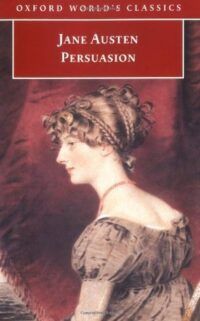
Persuasion by Jane Austen
Second-chance romance is a familiar trope, particularly for anyone who mourns “the one that got away.” However, few romances are as honest about the work you have to put in. Persuasion and Before I Let Go share the same romance trope, but they also deliver two very different outlooks on why second-chance love is so powerful. Reading these two books together reminds us of the need to value what we invest in our relationships. In Persuasion, Anne Elliot faces her loss alone. Her great love fell victim to the influence of Anne’s family, bad choices, and horrible circumstances. Austen ensures we feel the heartbreak of loss and disempowerment. Anne’s suffering is not so much the end of her relationship but the loss of her agency; something that is already so deeply felt in Regency novels.

Before I Let Go by Kennedy Ryan
Jump over to Before I Let Go, and we are given a quick look at the struggles that can break a relationship. Yasmin and Josiah faced an unrelenting barrage of events that would destroy most people in moments. Despite the end of their marriage, they still found a way to co-parent their two kids with separate lives. As they both move on from their trauma, it becomes easier to talk and reconnect, healing the biggest gap in a broken relationship: communication. Persuasion and Before I Let Go share the view that you must know what YOU are bringing to a relationship before looking at what you gain from it. However, each book takes a different angle. Where Anne needs to rebuild her confidence in who she is with Wentworth, Yasmin and Josiah both need to rebuild themselves after such extensive trauma. Relationships are never the same from beginning to end. They grow and change with the people in the relationship, just like these books.
At the Foot of the Cherry Tree by Alli Parker & They Called Us Enemy by George Takei, Justin Eisinger, Steven Scott, and Harmony Becker
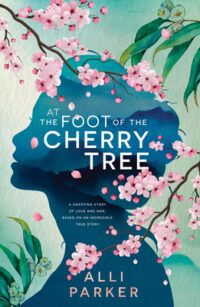
At the Foot of the Cherry Tree by Alli Parker
Memoirs are easy books to parallel read with others; the quick option is to match them with historical nonfiction of the same time period. It can sometimes be a little dry, but it does help with fact-checking both history and those who write it. The sweet spot is when you find two personal stories that question the history books. At the Foot of the Cherry Tree is categorised as historical fiction, but it is a novel based on the true story of Australia’s first Japanese war bride. Gordon Parker was 18 years old when he joined the Australian Army and left for Japan. In the aftermath of World War II, he meets Nobuko “Cherry” Sakuramoto, 16 years old and a survivor of Hiroshima’s bombing. Before their love even begins, there is already a wave of racism and abuse fuelled by hate and fear. It permeates from regular people in the community all the way to the bureaucratic top: The White Australia Policy, still in action until 1975.
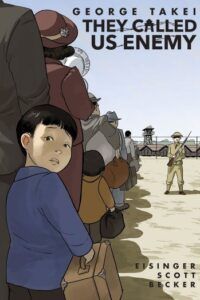
They Called Us Enemy by George Takei, Justin Eisinger, Steven Scott, and Harmony Becker
When reading At the Foot of the Cherry Tree with They Called Us Enemy, there is a level of social reflection achieved with both books. George Takei’s memoir is focused on his childhood. Like Gordon and Cherry, George was forced to face legalised racism in a country he called home. His story takes place during WWII, at the height of its fear, showing a part of American history that is often ignored. It’s a chief element shared with At the Foot of the Cherry Tree, as they both shine a light on chapters often hidden within our history books. Neither book is perfect, but they are both very real stories, sharing insight into the personal fallout of war.
Whether you are focused on one precious book or balancing multiple on your side table, reading should always be enjoyable. Finding a friendship between books can happen at any time and will always add a bit of depth to both stories. Looking for more great book pairs? Try Perfect Pairs: Books that Go Together Like Cats and Bookstores and If You Loved That Novel, Try This Nonfiction Book.




